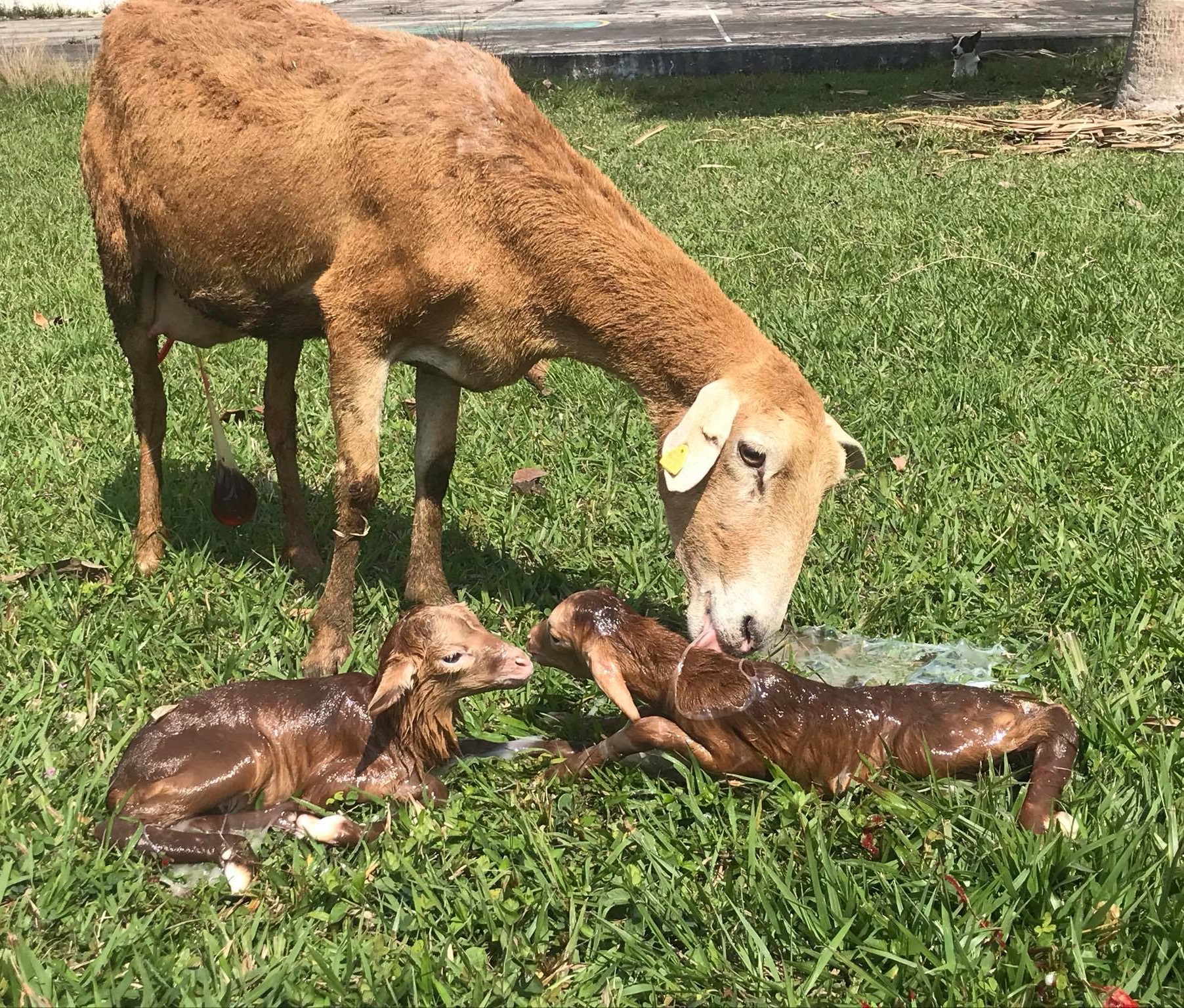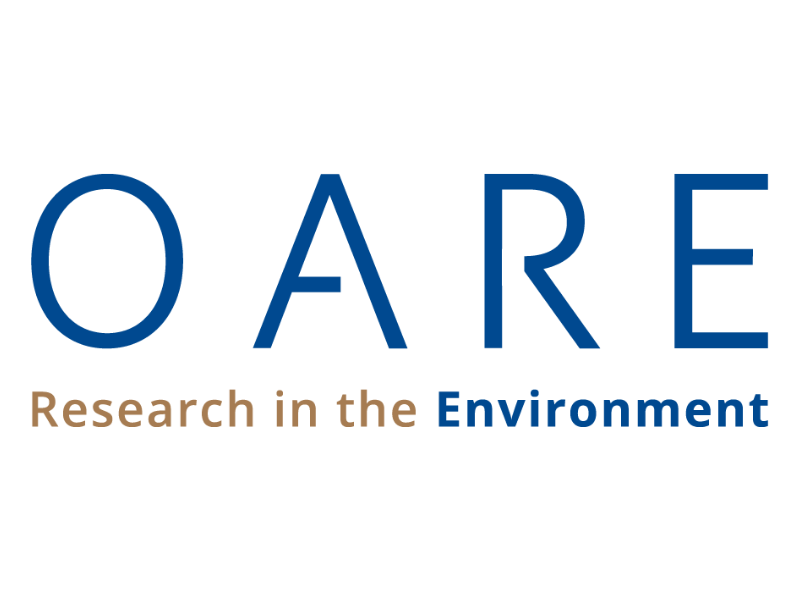Administración de lutropina (r-hLH) y su respuesta en la tasa ovulatoria y embriones viables en ovejas Pelibuey
Administration of lutropin (r-hLH) in the ovulatory and embryonic response in Pelibuey sheep

Esta obra está bajo una licencia internacional Creative Commons Atribución-NoComercial-CompartirIgual 4.0.
Mostrar biografía de los autores
Objetivo. Evaluar la influencia de lutropina alfa (LH recombinante humana, r-hLH) administrada a 12 y 24 h post-retiro del dispositivo de progesterona (CIDR) en la respuesta de horas al inicio del estro, tasa ovulatoria, ovocitos no fertilizados, embriones transferibles y niveles plasmáticos de LH, en un protocolo de ovulación múltiple a base de FSHp en ovejas de la raza Pelibuey. Materiales y métodos. Se utilizaron 18 ovejas de la raza Pelibuey, las cuales fueron distribuidas al azar en tres tratamientos (n=6): T1 (200 mg FSHp-Folltropin®); T2 (200 mg FSHp + 75 UI r-hLH a 12 h post-retiro del CIDR) y T3 (200 mg pFSH + 75 UI r-hLH a 24 h post-retiro del CIDR). Resultados. Horas del inicio al estro y tasa ovulatoria (TO) no se encontraron diferencias significativas. En ovocitos no fertilizados (ONF) fue mayor (p<0.05) en T2 (5.0 ± 2.3) en comparación con T1 (0.8 ± 0.6) y T3 (1.3 ± 0.7). El número de Embriones Calidad 1 (EC1) fue mayor (p<0.05) en T3 (3.1 ± 1.1) comparado con T1 (1.1 ± 0.3) y T2 (0.6 ± 0.5) y para Embriones Transferibles (ET) fue mayor (p<0.05) para T3 (6.6 ± 0.9) en relación a T2 (2.0 ± 1) y T1 (4.0 ± 0.6). Conclusiones. La aplicación de r-hLH a 24 h de retirado el CIDR incrementa los niveles plasmáticos de LH, en efecto, se disminuye la cantidad de ovocitos no fertilizados, se mejora la cantidad y calidad de embriones transferibles en ovejas de la raza Pelibuey.
Visitas del artículo 259 | Visitas PDF
Descargas
- Macías-Cruz U, López-Baca MA, Vicente R, Mejía A, Álvarez FD, Correa-Calderón A, et al. Effects of seasonal ambient heat stress (spring vs. summer) on physiological and metabolic variables in hair sheep located in an arid region. Int J Biometeorol. 2016; 60(8):1279–1286. https://doi.org/10.1007/s00484-015-1123-6
- Muñoz-García C, Vaquera-Huerta H, Gallegos-Sánchez J, Becerril-Pérez CM, Tarango-Arámbula LA, Bravo-Vinaja Á, et al. Influence of FecG E mutation on the reproductive variables of Pelibuey ewes in the anestrus period. Trop Anim Health Prod. 2021; 53(2):4–10. https://doi.org/10.1007/s11250-021-02755-7
- Moreira NH. Short protocol with progesterone-CIDR shows high ovulation synchrony and high fertility following artificial insemination in hair sheep. Research Square. 2023.https://doi.org/10.21203/rs.3.rs-2729531/v1
- Lagares M de A, Varago FC, Moustacas VS, Gheller VA, Nicolino RR, Borges I, et al. Effect of season and frequency of embryo collections on superovulatory response and embryo recovery in Santa Inês hair sheep. Small Rumin Res. 2021; 201:1-5. https://doi.org/10.1016/j.smallrumres.2021.106441
- Arashiro EKN, Pinto PHN, Lima JTM, Henry M, Ascoli FO, Souza-Fabjan JMG, et al. Three superovulation protocols for in vivo embryo production in Santa Inês sheep. Ciência Rural. 2022; 52(8):1-7. https://doi.org/10.1590/0103-8478cr20210308
- Oliveira MEF, Figueira LM, Fabjan JMGS, Fonseca JF da. New approaches to superovulation in goats and sheep. Rev Bras Reprodução Anim. 2021; 45(4):229–235. https://doi.org/10.21451/1809-3000.RBRA2021.029
- Martinez-Ros P, Astiz S, Garcia-Rosello E, Rios-Abellan A, Gonzalez-Bulnes A. Effects of short-term intravaginal progestagens on the onset and features of estrus, preovulatory LH surge and ovulation in sheep. Anim Reprod Sci. 2018; 197:317–323. https://doi.org/10.1016/j.anireprosci.2018.08.046
- D’Alessandro AG, Martemucci G, Taibi L. How the FSH/LH ratio and dose numbers in the p-FSH administration treatment regimen, and insemination schedule affect superovulatory response in ewes. Theriogenology. 2005; 63(6):1764–1774. https://doi.org/10.1016/j.theriogenology.2004.08.002
- Bartlewski PM, Seaton P, Franco Oliveira ME, Kridli RT, Murawski M, Schwarz T. Intrinsic determinants and predictors of superovulatory yields in sheep: Circulating concentrations of reproductive hormones, ovarian status, and antral follicular blood flow. Theriogenology. 2016; 86(1):130–143. http://dx.doi.org/10.1016/j.theriogenology.2016.04.024
- Endo N, Tamesaki C, Ohkura S, Wakabayashi Y, Matsui H, Tanaka A, et al. Differential changes in luteinizing hormone secretion after administration of the investigational metastin/kisspeptin analog TAK-683 in goats. Anim Reprod Sci. 2015; 159:87–93. http://dx.doi.org/10.1016/j.anireprosci.2015.05.016
- García-Salas A, Cortez-Romero C, Salazar-Ortiz J, Arroyo-Ledezma J, Ruíz-Vera VM, Vaquera-Huerta H, et al. Administration of exogenous hormones in ovulatory and embryonic response in Pelibuey sheep. Reprod Domest Anim. 2017; 52(3):446-451. https://doi.org/10.1111/rda.12930
- Perera-Marín G, Gutiérrez CG, Murcia C, León H, González-Padilla E. Progesterone and the distribution of pituitary gonadotropin isoforms in cattle. Anim Reprod Sci. 2008; 104(2–4):164–176. https://doi.org/10.1016/j.anireprosci.2007.02.015
- Ortega Á, Olivares A, Murcia C, Díaz D, González-Padilla E, Montero A, et al. Biological and immunological activity in bovine luteinizing hormone charge isoforms. Rev Mex Ciencias Pecu. 2016; 7(1):29–51. https://doi.org/10.22319/rmcp.v7i1.4148
- Figueira LM, Alves NG, Maia ALR e. S, Souza-Fabjan JMG de, Batista RITP, Morais MC da C, et al. Embryo yield and quality are associated with progestogen treatment during superovulation protocol in lactating Lacaune ewes. Theriogenology. 2020; 155:132–138. https://doi.org/10.1016/j.theriogenology.2020.06.004
- Kolling APML, Brilhante GC, Drechmer J, Santos LM, Silva BDM, Ramos AF. Relationship between superovulation and embryo production with ovarian follicular population before superovulatory treatment in Brazilian Bergamasca sheep. Arq Bras Med Vet e Zootec. 2021; 73(1):115–122. https://doi.org/10.1590/1678-4162-12105
- Forcada F, Amer-Meziane MA, Abecia JA, Maurel MC, Cebrián-Pérez JA, Muiño-Blanco T, et al. Repeated superovulation using a simplified FSH/eCG treatment for in vivo embryo production in sheep. Theriogenology. 2011; 75(4):769–776. http://dx.doi.org/10.1016/j.theriogenology.2010.10.019
- Simonetti L, Forcada F, Rivera OE, Carou N, Alberio RH, Abecia JA, et al. Simplified superovulatory treatments in Corriedale ewes. Anim Reprod Sci. 2008; 104(2–4):227–237. https://doi.org/10.1016/j.anireprosci.2007.01.020
- Salehi R, Kohram H, Towhidi A, Moakhar HK, Honarvar M. Follicular development and ovulation rate following different superovulatory treatments in Chall ewes. Small Rumin Res. 2010; 93(2–3):213–217. http://dx.doi.org/10.1016/j.smallrumres.2010.05.017
- Nikbakht K, Habibizad J, Meamar M. Effect of GnRH and hCG injection on the reproductive performance and serum progesterone concentration of ewes during spring season. Vet Res Forum. 2022; 13(4):553–561. https://doi.org/10.30466/vrf.2021.527306.3158
- Brasil OO, Moreira NH, Santos G, Silva BDM, Mariante AS, Ramos AF. Superovulatory and embryo yielding in sheep using increased exposure time to progesterone associated with a GnRH agonist. Small Rumin Res. 2016; 136:54–58. http://dx.doi.org/10.1016/j.smallrumres.2016.01.005
- Falchi L, Ledda S, Zedda MT. Embryo biotechnologies in sheep: Achievements and new improvements. Reprod Domest Anim. 2022; 57(Suppl. 5):22–33. https://doi.org/10.1111/rda.14127
- Saleh M, Holtz W. LH pattern and ovarian response in ovsynch-synchronized superovulated goats induced to ovulate with GnRH or hCG. Theriogenology. 2022; 185:61–69. https://doi.org/10.1016/j.theriogenology.2022.03.020
























